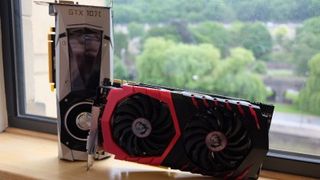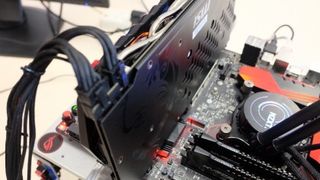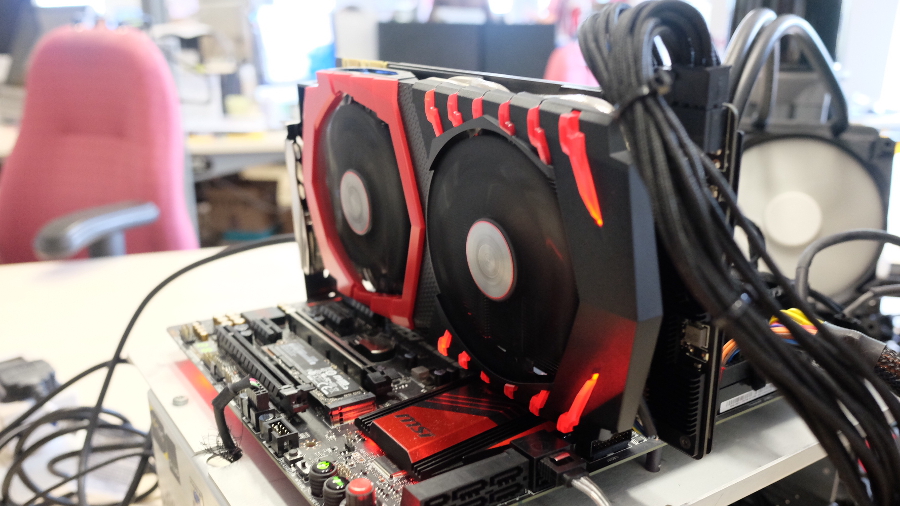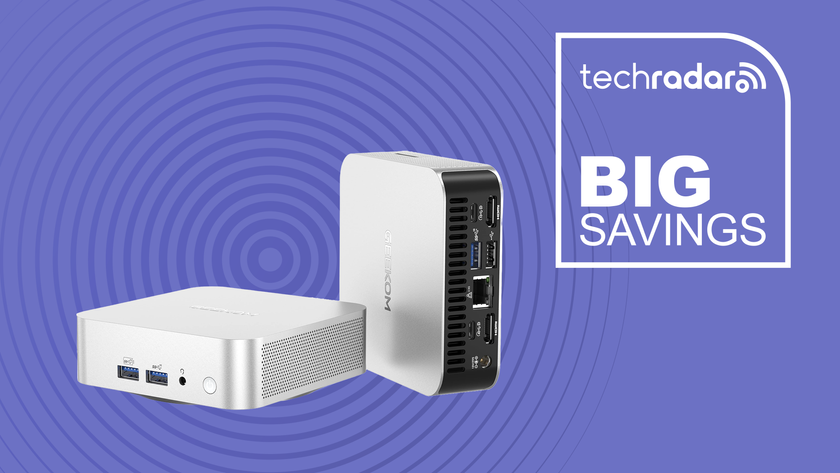TechRadar Verdict
Nvidia has once again nailed what the GTX 1070 should be about. 1440p is the new 1080p as the place to be, and the GTX 1070 makes gaming at this resolution a reality. If you're gaming at 1080p now and are looking to upgrade to those denser pixels in the future, this GPU is a fine answer to that problem.
Pros
- +
Strong 1440p performance
- +
Wide selection of aftermarket cards
- +
Affordable reference cards
Cons
- -
Founder's Edition still too pricey
Why you can trust TechRadar
The Nvidia GeForce GTX 1070 follows the GTX 970, which back in its day, was the best bang for your buck graphics card of its generation. Packed with 1,664 CUDA cores and a boost clock of 1,178 MHz, the 4GB (or 3.5GB if you’re being pedantic) GTX 970 was more than capable of powering the best PC games at 1080p – and still is.
Nvidia expands GTX 16-Series with new mobile graphics and desktop GTX 1650
An Nvidia GPU benchmark leak suggests an RTX 2070 Ti, but the details are odd
However, fast forward to the Nvidia GeForce GTX 1070, and it’s taken the crown from its value-oriented precursor. So, did it succeed in following the GTX 970?
Well, the GTX 1070 has more 256 more CUDA cores, up to 1,920, along with a higher boost clock at 1,683MHz. Plus, an additional 4.5GB of GDDR5 VRAM.
Of course, the Nvidia GeForce GTX 1070 is based on Pascal’s mighty 16nm FinFET manufacturing process, enabling 6.5 TFLOPs of overall performance. That puts it in the same league as some of the best graphics cards out there, like the Titan X, but for half the price.

If you take a look back at our first review of the GTX 1080 that launched at the beginning of this June, you'll know our biggest complaint was with the price. The Founder's Edition looks fantastic and really does wonders to reinvigorate the now ageing metallic cooler we first saw with the launch of the GTX 680 way back in the day.
One issue with Nvidia’s Founder’s Edition cards is that you end up paying a high premium for what? A slightly earlier release date and sub-par cooling? Color us unconvinced. Unfortunately, this trend is true again with the Nvidia GeForce GTX 1070.
UK-based retailer Overclockers will be selling the Founder's Edition version at £410 (around $584 or AUS$792). There is a reason to be optimistic, however, as partner cards will be coming in at a far lower price.
MSI's Aero Cooler for instance, with a default blower style cooler is priced at £380 (around $541 or AUS$734), while an aftermarket Twin Frozr will set you back 10 pounds (around $14/AUS$19) more.
However, the Nvidia GeForce RTX 2070 has finally arrived, and Nvidia GeForce GTX 1070 prices are going to fall rapidly – with the MSI Gaming X card included. So, you can bet that there will be a ton of Cyber Monday 2018 deals to further slash the prices on this last-gen midrange GPU.
X marks the spot
The GTX 1070 variant we have here is non-other than MSI's top of the line Gaming X that comes with a fully custom PCB, improved fan design, LED lighting and stock overclock as standard. And, a meaty one at that. Thanks to MSI's Afterburner software, you have access to three different modes: Silent, Gaming and OC mode.
These fan modes fit in with the clean aesthetic design of MSI’s new Gaming X GTX 1070. It’s a nice reiteration of the last generation, but there are still a few things that bug us here – not least the inclusion of RGB LEDs on a card that’s mostly black and red, as realistically you just can’t change the color on that from anything other than red, white or off. Other than that it’s a fairly nice update.
However, these noise and aesthetic changes are arguably trivial, as once buried in your case you’ll barely hear or see this thing – unless you have a tempered glass side panel. This is especially true when you consider the 0dB fan tech that keeps the fans off until the core hits 60 degrees.

So, what makes this monster different from the GTX 1080 we reviewed a few weeks prior? Well, basically, just a few less CUDA cores,a lower base clock and a departure from the 10GHz memory of GDDR5X. That being said, GDDR5 is still a strong competitive VRAM memory spec, so it’s hardly like you’re going to be losing out to a huge degree, especially at 1080p and 1440p.
The extra megahertz on that core clock, that the factory overclock brings, will net you a good 20% improvement to frame rates in-game. Now, we know that doesn't sound like a lot, but as far as minimum frame rates go, the higher they are the smoother your overall experience will be.

Zak is one of TechRadar's multi-faceted freelance tech journalists. He's written for an absolute plethora of tech publications over the years and has worked for Techradar on and off since 2015. Most famously, Zak led Maximum PC as its Editor-in-Chief from 2020 through to the end of 2021, having worked his way up from Staff Writer. Zak currently writes for Maximum PC, TechRadar, PCGamesN, and Trusted Reviews. He also had a stint working as Corsair's Public Relations Specialist in the UK, which has given him a particularly good insight into the inner workings of larger companies in the industry. He left in 2023, coming back to journalism once more. When he's not building PCs, reviewing hardware, or gaming, you can often find Zak working at his local coffee shop as First Barista, or out in the Wye Valley shooting American Flat Bows.













